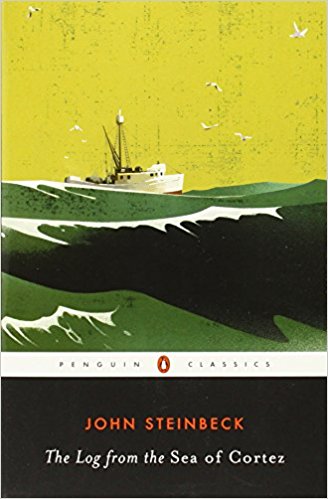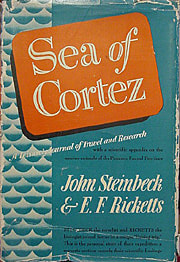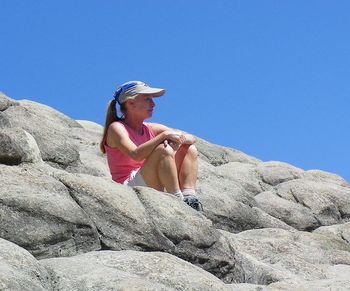|
[Following is a guest blog by the author of the Introduction to The Last Resort, David Hoefer. I invite other readers to share their thoughts about The Last Resort for future blog posts. You can contact me here.]
As several readers have noted, The Last Resort, with its dual emphasis on human interest and scholarly fact, is unusually structured. Sallie and I didn’t prepare it from a model but that doesn’t mean the book is entirely without precedent. About the time The Last Resort was completed, I stumbled on to a work that seemed surprisingly parallel in content and format: John Steinbeck’s The Log from the Sea of Cortez. It had originally been published with additional material, including a species catalog, as Sea of Cortez: A Leisurely Journal of Travel and Research by Steinbeck and his friend and co-author, the Salinas marine biologist Ed Ricketts. That earlier volume was published in 1941, a mere two or three months before Pud Goodlett began keeping his journal on Salt River. Of sailing and science The original Sea of Cortez is really two books in one—a blend of California varietals. Like The Last Resort, it attempts to balance human interest and scientific information. The first segment, written by Steinbeck and later published solo as the logbook, is a day-to-day account of a scientific collecting trip aboard the sailing ship Western Flyer to the Gulf of California, that long, warm tendril of ocean separating the Baja California Peninsula from mainland Mexico. It is marked by Steinbeck’s particular gift as a philosophizing poet or a poeticizing philosopher, without really being either. The second segment, written by Ricketts, documents the results of the expedition: a substantial taxonomic record of the invertebrate marine life cajoled—swimming, swaying, and stinging—from the waters of the Sea of Cortez. Along with his earlier book, Between Pacific Tides, co-authored with Jack Calvin—a similar catalog for intertidal life of near-shore California—Sea of Cortez allows Ricketts to lay claim to significant contributions in the development of West Coast marine biology, despite his death at the young age of 50 in 1948. The Log from the Sea of Cortez, repackaged in 1951 without the scientific content, substitutes Steinbeck’s memoir and tribute to his friend, “About Ed Ricketts,” for the species catalog. A whisper of things to come Sea of Cortez was not a trial run for The Last Resort, and I do not mean to imply that The Last Resort is in Steinbeck’s and Ricketts’s league. For that matter, I have no evidence that Pud had any knowledge of Steinbeck’s sideways foray into plant and animal study, although he was a fan of Steinbeck’s other work, including Travels with Charley. Nevertheless, the two books do share a similar form—one that is rather unusual in American literature, and maybe in other world literatures as well. If you’ve enjoyed The Last Resort, consider also Sea of Cortez or at least the shorter reissue. Steinbeck and Ricketts make the unusual both intriguing and important.
0 Comments
Your comment will be posted after it is approved.
Leave a Reply. |
Details
Archives
June 2023
Categories
All
|




 RSS Feed
RSS Feed